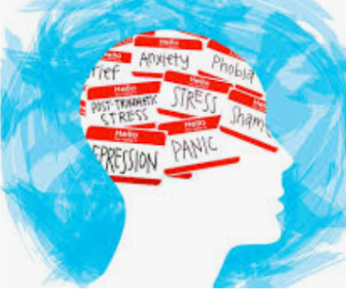
Have you ever spent hours binge-watching your favorite Netflix show, only getting up to grab snacks or check your phone? With the rise of digital devices, teenagers are more sedentary than ever. While screen time feels like harmless entertainment, it comes with serious consequences, impacting both physical and mental health. Inactivity can lead to obesity, cardiovascular issues, anxiety, and depression. Understanding these risks is crucial to making healthier choices.
1. Why Are Teenagers More Sedentary Than Ever?
Today’s teenagers are more sedentary than ever. A sedentary lifestyle is defined by long periods of sitting, reclining, or lying down that require minimal energy. In an era dominated by digital devices—television, smartphones, or laptops—sedentary behavior has become increasingly common among many people, including teenagers.

With the constant presence of digital devices such as smartphones and laptops, sedentary behavior has become normalized in society. In 2024, 41% of teenagers in the United States spend over 8 hours on electronic devices daily. This starkly contrasts the Centers for Disease Control and Prevention’s (CDC) recommendation that school-aged youth should do 60 minutes or more of physical activity daily, which some teens fail to meet due to the allure of screens.
2. The Physical Risks of Inactivity
Long hours of sitting affect more than just metabolism—they contribute to obesity, muscle loss, and even long-term cardiovascular risks. Research from the World Health Organization (WHO) links sedentary lifestyles to a higher chance of developing chronic diseases, such as diabetes and heart disease, later in life.
These issues don’t only affect adults. Teens, whose bodies are still developing, face risks like stunted growth and hormonal imbalances. The CDC emphasizes that “aerobic, muscle-strengthening, and bone-strengthening” workouts are essential to support overall health and development. However, with increasing screen time and, for some, fewer opportunities for movement, many teens are not meeting these physical requirements, and their mental health is also affected.
3. How a Sedentary Lifestyle Impacts Health
Adolescence is already a challenging time, with fluctuating hormones and emotional instability. During this time, teens are more sensitive to stress and change, making navigating relationships, schoolwork, and daily life difficult.
A sedentary lifestyle increases the likelihood that teens will struggle with anxiety, behavioral disorders, and depression. A lack of physical activity interferes with the body’s ability to regulate mood and energy levels. Furthermore, the physical lethargy associated with sitting down for long hours can diminish motivation. This makes it harder for teens to engage in different tasks, pursue different hobbies, or maintain connections with others.
4. How to Stay Active & Improve Mental Well-Being
Incorporating physical exercise and mental health support into daily routines is critical to combating the negative effects of a sedentary lifestyle. Encouraging regular exercises such as



can boost physical health and energy levels. Furthermore, the National Institute of Health (NIH) highlights the importance of mental health strategies such as being mindful and socially connected and managing stress through journaling or meditation to reduce strain on your mind.

Making small, consistent changes in your daily routine–like taking breaks to stretch and setting goals for yourself–can improve overall well-being and reduce the long-term impacts of inactivity.
The rise of sedentary lifestyles presents significant risks to both physical and mental health, especially for teenagers. These challenges highlight the importance of embracing healthier habits to support the overall well-being of adolescents. If you or someone you know is struggling with mental health problems, don’t wait–reach out for help immediately. Support is available at the 988 Lifeline, or you can even contact someone you trust. Reaching out can be the first step towards a brighter and healthier tomorrow.









